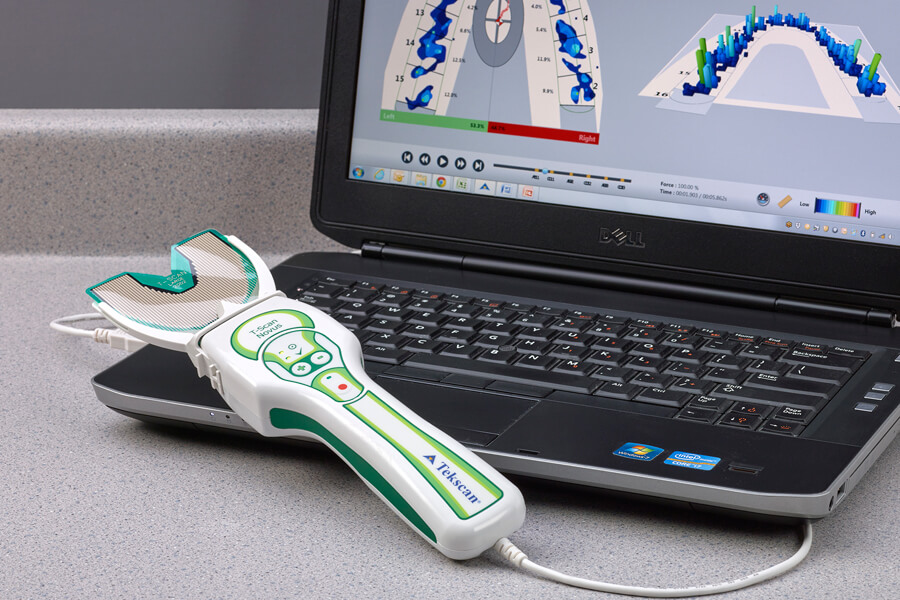Dr. Mistry’s Therapy Protocol
Overview
Dr. Priya Mistry offers a comprehensive approach to treating Temporomandibular Joint Disorder (TMJ/TMD) through various specialized therapies. These therapies include Myofascial Release, Craniosacral Therapy, and Osteopathic Manual Jaw Manipulation. Each therapy targets different aspects of the jaw, neck, and facial regions to alleviate pain and improve function. Explore the sections below to learn more about each therapy and how they can help you on your journey to TMJ relief.

Myofascial Release
Fascia is the connective tissue that surrounds and supports muscles throughout your body, and it can be a significant source of chronic pain for individuals suffering from TMJ Disorder. Myofascial release involves sustained pressure on restricted fascia to help increase the flow of beneficial fluids like blood and lymph and stimulate the nervous system, thereby reducing chronic pain in the head, neck, and jaw.
How Does TMJ/TMD Affect the Fascia?
In TMJ disorders, soft tissues, including the fascia, undergo repeated microtrauma, leading to chronic pain. This is due to the formation of localized muscle trigger points that are tender to the touch and may cause pain during movement.
Myofascial Release for TMJ Pain
Unlike deep tissue massage, Myofascial Release targets the connective tissue of the muscles rather than the muscles themselves. This therapy may involve hands-on treatment both outside and inside the jaw.
Dr. Mistry's Myofascial Release Protocol:
- Suboccipital Release (back of the neck, from the base of the skull to the cervical spine)
- Sternocleidomastoid (SCM) Release (side of the neck)
- Temporalis Release (temples and sides of the head)
- Masseter deep fascia release (sides of the jaw)
- Intraoral pterygoid deep fascia release (inside the mouth, near the ear and cheekbone)
Tek Scan + Disclusion Time Reduction (DTR)
Many people in the United States struggle with acute or chronic pain caused by Temporomandibular Joint Disorder or Dysfunction (also called TMJ/TMD). If you struggle with TMJ/TMD, it would be beneficial to seek care from a qualified TMJ practitioner that uses state-of-the-art technology to help aid in the diagnosis and treatment of your TMJ Dysfunction. Dr. Priya Mistry – The TMJ Doc – is a TMJ Dentist at the top of her field and celebrates a 90% success rate with her TMJ treatment modalities. It’s imperative to receive an accurate diagnosis and it’s important to understand what’s causing your TMJ pain and dysfunction in order to receive quality care that provides lasting relief for your condition.

What is the TekScan?
TekScan or T-Scan is a digital device used to collect biting force data when diagnosing and treating TMJ/TMD. This technology measures relative bite force to determine pressure distribution and pinpoint malocclusion – or where the bite is “off”. When there is significant malocclusion, TMJ/TMD pain can result. Data collected from the T-Scan analysis helps establish a baseline when undergoing TMJ/TMJD treatment. Additionally, you can view your own data while undergoing your consultation to better understand the problems with your bite and why treatment is helpful in relieving pain and discomfort.
Components of TekScan
The TekScan has three components that work together to provide useful and accurate data pertaining to how your teeth come together when biting.
- Handpiece – The handpiece is used to capture and transfer data from the scanner’s sensor to the computer software.
- Sensor – The wafer-thin sensor is durable and can withstand 15-25 closures during your bite analysis. It provides high resolution and repeatable accuracy.
- Software – The technology’s software provides a customizable arch that accurately represents your dental arches. It also collects the Center of Force (or COF) Target and Trajectory. This helps track which teeth touch first when biting and in what order they touch, which is helpful information in determining the severity of your condition, as well as the best therapies for you.
What Is It Like to Receive a T Scan Analysis?
How is a T-Scan Different From Traditional Bite Analysis?
Osteopathic Manual Jaw Manipulation (OMJM)
Osteopathic Manual Jaw Manipulation (OMJM) is a hands-on technique Dr. Mistry refined through intensive training. This technique uses subtle manual pressure to help realign the jaw joint, offering a unique and effective treatment option for patients suffering from TMJ/TMD
How Does OMJM Help the Jaw Joints?
OMJM gently “gaps” or separates the bony structures of the jaw joint, allowing for comfortable realignment. This manipulation increases circulation, encourages natural healing, soothes tight fascia, and improves jaw range of motion.
Advantages of OMJM:
- Addresses structural alignment problems in the jaw joints.
- Increases circulation and lymphatic flow.
- Relieves tight fascia, jaw muscles, and stiffness.
- Improves jaw range of motion.
After Each Therapy Session
- Drink plenty of water: Helps flush out toxins released during therapy.
- Take a walk: Gentle movement promotes blood flow and aids in recovery.
- Watch what you eat: Avoid hard-to-chew foods and opt for easy-to-chew options to avoid straining the jaw.
TMJ Orthotics
What is the Purpose of a TMJ Orthotic?
TMJ Orthotics are designed with three purposes in mind. First, TMJ Orthotics hold the muscles at their correct resting length which is their most relaxed position. Putting the muscles in their most relaxed position for a significant amount of time will help to bring the muscles out of their dysfunctional state, thereby reducing pain. Second, TMJ Orthotics will decompress the jaw joints – taking the pressure off the joints. This will slow down the rate of wear and tear in the jaw joints AND it can allow the disc of cartilage to get back into or remain in proper alignment. Lastly, TMJ Orthotic will protect your teeth against the enormous forces of clenching and grinding.
TMJ Dentist Dr. Priya Mistry usually recommends that you wear your TMJ Orthotic 22/7 during their treatment. As symptoms subside, you will reach a point in treatment when Dr. Mistry recommends that you taper off wearing the orthotic during the daytime. Most people continue to wear the orthotic indefinitely at nighttime, as it keeps the muscles and joints stable.
Can I Buy a TMJ Orthotic at the Store or Online?
Precise measurements must be taken to fabricate a TMJ Orthotic. They cannot be bought online or at a store. TMJ Orthotics are not a one-size-fits-all appliance! You may have seen nightguards in stores or while browsing online from suppliers that promise to provide TMJ relief without visiting a doctor. But we advise against purchasing an over-the-counter TMJ orthotic or even a nightguard because it could damage your jaw joints and worsen your condition. You should never wear a TMJ Orthotic without direct supervision from a skilled and experienced TMJ Dentist.
Are TMJ Orthotics Comfortable?
Generally, yes, TMJ Orthotics are comfortable. They are custom-fit for your teeth with as little material as possible on the tongue side. They are also made to relieve pressure and reduce pain in the muscles and the jaw joints, thereby relieving your temporomandibular joint dysfunction and its symptoms. If you wear your TMJ Orthotic during the day, you may experience an adjustment period as you get used to and comfortable speaking while wearing your prescribed orthotic.
Begin your journey to TMJ relief by scheduling a consultation with Dr. Mistry today.
Schedule a Consultation
Dr. Mistry will provide a personalized and comprehensive consultation to devise a gentle and effective treatment plan tailored to your needs. Click Here to Schedule Online or Call Us at (503) 255-8293
